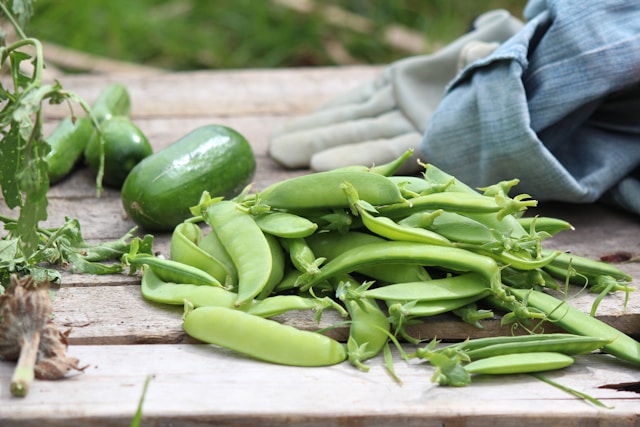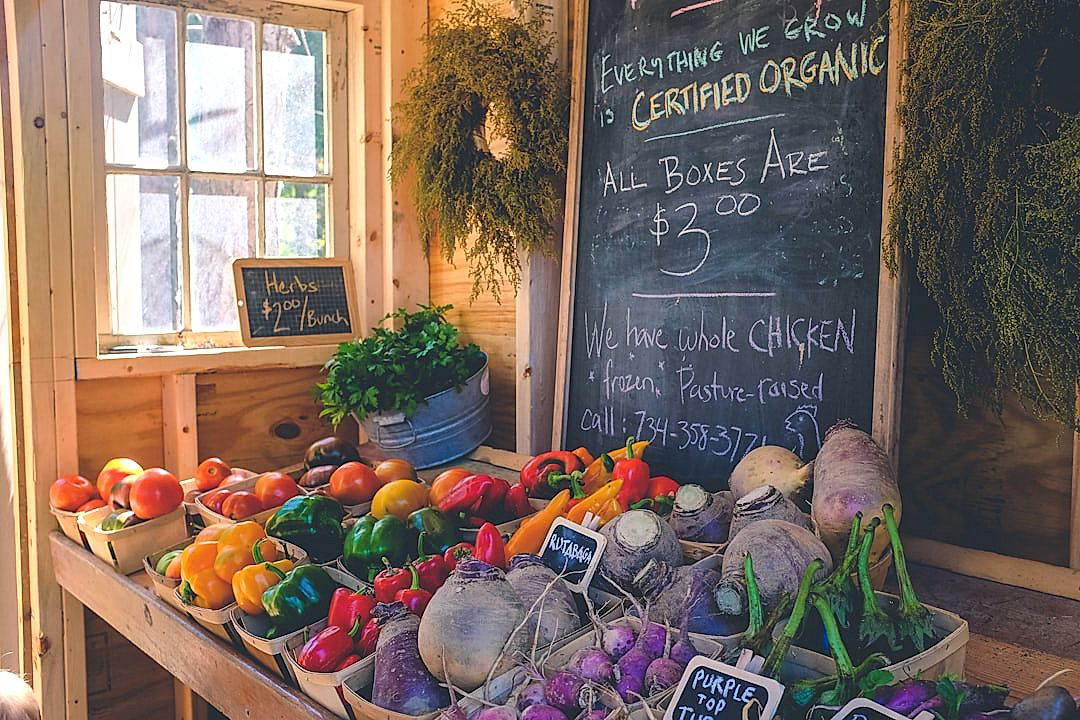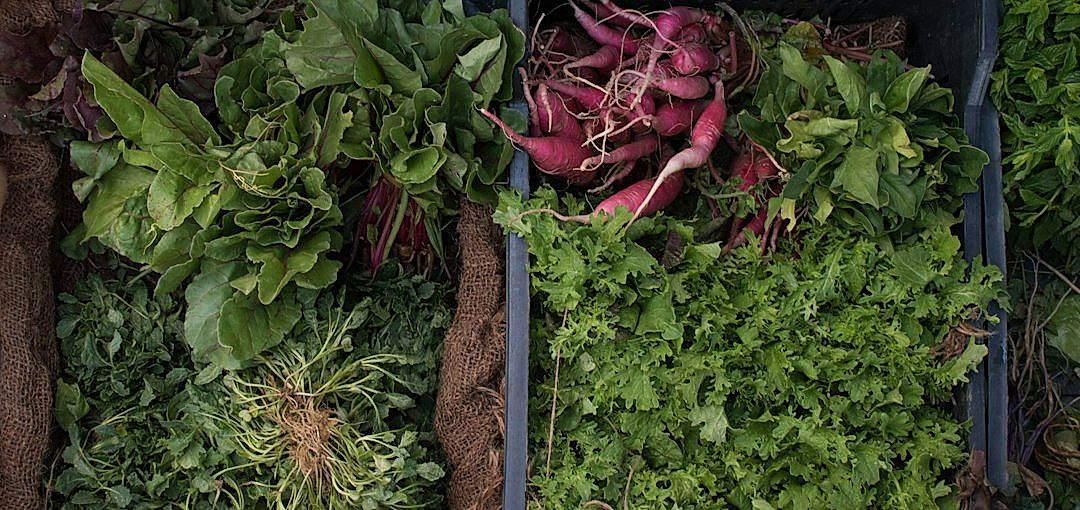Understanding the intricate mechanisms of global market dynamics is a critical determinant of success for produce growers worldwide.
In a globalized world, the intricacies of supply, demand, and fluctuating market trends can pose both challenges and opportunities for farmers.
International trade agreements, consumer trends, and geopolitical happenings can drastically reshape the playing field.
Therefore, it is essential for growers to remain aware and adaptable.
This article aims to delve into understanding these complexities and providing a strategic approach to harness opportunities and mitigate challenges.
We will explore pivotal factors and provide valuable insights for any produce grower seeking to thrive in global markets.
Contents
Global Market Dynamics For Produce Growers
1. Rising consumer demand for organic produce
The global market for organic produce has seen a significant increase in demand, firmly establishing its place as a major dynamic within the global agriculture industry.
This rise is primarily influenced by shifting consumer behaviors, with an increasing number of consumers now favoring organic produce over conventionally-grown alternatives.
Increased awareness about health and environment is driving this shift towards organic agriculture.
Organic foods are deemed to be healthier, safer, and more nutritious, hence the growing preference.
Moreover, the ecological sustainability of organic farming techniques is luring consumers who are concerned about environmental conservation.
In essence, it is the intersection of health-conscious consumption and environmental sustainability that has sparked an upsurge in the global demand for organic produce.
Global projections indicate that demand for organic produce is not going to decline any time soon.
Instead, the market is expected to keep blossoming based on current trends in consumption.
These evolving consumer preferences are compelling producers to adjust their farming practices.
There is an increasing push for agricultural practices that do not only ensure produce is organic but also verified and certified.
The process of organic certification enforces strict standards of production and labels the produce as organic, delivering assurance to consumers.
Besides, the call for transparency in the food production and supply chains is becoming louder.
In answer to consumer demand, cultivators around the globe are turning towards organic farming, leading to its rapid proliferation.
Undoubtedly, rising consumer demand for organic produce is reshaping the dynamics of global produce markets.
Still, the organic industry is facing its own challenges such as high production costs and supply-demand gaps.
Nonetheless, the market drivers are strong, indicating that the future of organic produce is promising and robust.
Therefore, growers and policymakers alike must continue to adapt and innovate to successfully ride the wave of this inevitable market shift.
2. Climate change impacts on crop yields.
Climate change is an increasingly significant factor impacting crop yields globally.
As the earth’s average temperature continues to rise, many regions are experiencing more extreme weather conditions such as longer periods of drought, more intense heatwaves, and more frequent and severe storms.
These conditions are creating environmental stress for crops which can result in lower yields.
The availability of water, a basic necessity for the growth of plants, is also affected by a changing climate as precipitation patterns shift, leading to an imbalance in water supply.
Furthermore, the increased concentration of carbon dioxide in the atmosphere, while beneficial to some extent as a plant nutrient, can decrease the nutritional quality of some crops when present in excess.
The warmer conditions are also promoting the spread of pests and diseases, which further threaten the productivity of crops.
There are also a number of indirect impacts of climate change such as shifts in the distribution of pollinators and increased competition from invasive species.
The severity of these impacts varies regionally with some areas being more vulnerable than others. This regional variation in climate impact means that some regions can even experience temporary increases in yield due to milder conditions, while in others yields may plummet drastically.
In some cases, farmers have to switch to growing different types of crops that are more resistant to changing climatic conditions, leading to shifts in global market dynamics.
It’s also worth noting that the impacts of climate change on crop yields aren’t limited to the fields; they also affect post-harvest processes such as storage and transportation.
This is because higher temperatures can lead to faster spoilage of produce and more challenging conditions for transporting fresh produce.
Additionally, the increased incidence of extreme weather events can disrupt transportation and market access, contributing to price volatility in the global market.
Given the lengthy nature of most farming cycles, these impacts can have long-term effects, affecting both immediate and future produce yields.
For example, repeated exposure to stressful conditions might weaken plant health over time, making them less productive in subsequent seasons.
The cumulative impact of these alterations in crop yields due to climate change will significantly shape the future of global produce markets.
Therefore, it is vital for growers, traders, and policy makers to consider these impacts in their decision-making processes in order to adapt and build more resilient systems.
3. Increasing costs of pesticides and fertilizers
As growers across the globe strive to meet the demand for high-quality, high-yield crops, they are increasingly confronted with the rising costs of pesticides and fertilizers.
Pesticides and fertilizers are crucial inputs for producing a bountiful and healthy crop.
The increased prices of these substances significantly factor into the production costs of growers.
Various reasons contribute to these increasing costs, ranging from production to market dynamics.
For instance, the production of these substances often involves the extraction and processing of non-renewable resources.
The depletion of these resources gradually pushes the production costs up.
Increasing prices also reflect the influence of global market forces and government regulations on these substances.
In economies where the demand for agricultural inputs outpaces supply, prices tend to rise.
Additionally, government regulations such as environmental policies can impel companies to use costlier production methods, reflecting in the subsequent pricing of their products.
Furthermore, many countries import these substances, making them susceptible to global market dynamics such as exchange rates and international trade policies.
Thus, increased tariffs or a weak national currency can significantly rise the costs of these imports for growers.
On the other side, an increase in the cost of these critical inputs implies a cost-push inflation scenario for the produce growers.
Such a situation puts pressure on their profit margins and compels them to adjust the selling price of their produce, impacting the consumers’ pocket.
Undoubtedly, these rising costs pose significant challenges for produce growers worldwide.
However, they also provide the impetus to explore more sustainable and cost-effective farming techniques.
4. Advances in Farming Technology and Equipment
The global market dynamics for produce growers are heavily influenced by the advances in farming technology and equipment.
With the advent of modern agricultural techniques, there is a surge in the utilization of high-tech and precision technology to boost crop yields.
One such technological leap is the use of drone technology which allows farmers to monitor crops more efficiently, offering real-time data pertaining to crop health, nutrient levels, and moisture content.
The use of automated machinery helps in reducing the heavy dependency on manual labour, thus streamlining the farming process.
With the advent of modern agricultural techniques, there is a surge in the utilization of high-tech and precision technology to boost crop yields.
Equally, the implementation of smart irrigation systems have drastically improved water efficiency, leading to sustainable farming practices.
Moreover, the use of software programs and mobile applications for crop management and analysis has also revolutionized farming.
These tools offer farmers digitized maps and tracking systems for a better understanding of their crops’ lifecycle and yield estimation.
Progress in bio-engineering has also paved the way for genetically enhanced crops which are resistant to pests, diseases, and varying climatic conditions.
Furthermore, robotic harvesting systems are reducing the time and cost involved in harvesting, especially for crops such as berries, that require delicate handling.
Through the usage of artificial intelligence and machine learning, farmers can now predict patterns in farming which can aid in mitigating risks and optimizing yields.
Developments in vertical farming in urban areas have also revolutionized the agriculture industry, reducing space limitations and increasing productivity.
In addition to the aforementioned points, the evolution of technology has also helped in ensuring food safety through improved packaging and storage technologies.
The Internet of Things (IoT) has been a game-changer in the agro-industry, offering real-time monitoring capabilities of crops, soil, weather, and equipment.
Despite of the initial high cost of implementation, these technology adoptions ensure long-term benefits in terms of improved productivity, cost savings, increased crop yields, and sustainable farming practices.
5. Fluctuating International Trade Laws and Tariffs
Over the years, one of the many challenges produce growers have had to grapple with is the ever fluctuating international trade laws and tariffs.
The constant changes and instability in the international trade arena directly affect the global market dynamics for produce growers.
For instance, sudden changes in trade laws can lead to closure of markets that growers were previously exporting to, essentially altering the market dynamics overnight.
Indeed, the fluctuating international trade laws and tariffs can result in sudden market contractions for produce growers.
On the other hand, these changes can sometime bring about positive outcomes when they open up new market opportunities.
Sometimes, due to these fluctuations, produce growers are faced with increasing tariffs, which in turn raise the cost of exporting produce to certain markets.
This can squeeze the profit margins of growers and may even render some export opportunities unviable.
The uncertainty caused by these fluctuations makes it difficult for growers to plan effectively for the future.
It also increases the risk involved in growing certain types of produce that may be more affected by these changes in trade laws or tariffs.
Just as no two countries have identical law systems, the international trade laws are also diverse and complex.
Trade laws vary greatly depending on the countries involved, and there may be additional restrictions or requirements for growers to consider.
These aspects can complicate the process of exporting produce and raise the cost of doing business internationally.
In order to navigate this challenging landscape, many growers may turn to expert advice or seek support from industry bodies.
Nevertheless, despite these challenges, the global market still offers vast opportunities for produce growers.
Rather than being purely disadvantageous, the fluctuations in international trade laws and tariffs can also spur growers to seek out new markets and diversify their product offerings.
It can also encourage them to develop more resilient business strategies that can withstand these market fluctuations.
The Bottom Line
Throughout these factors, the agricultural field finds itself at a complex crossroads.
The surge in consumer demand for organic produce mirrors an increased environmental consciousness, a shift that the industry must adapt to.
Concurrently, the harsh realities of climate change underscore the urgent need for efficient, resilient farming practices that can withstand unpredictable weather conditions.
The rising expenses associated with traditional farming inputs like fertilizers and pesticides elevate the appeal of sustainable, cost-effective solutions.
Technology advances offer remarkable potential for such solutions, potentially revolutionizing the sector.
Lastly, the dynamic nature of international trade legislation poses an intricate layer of uncertainty but also harbors opportunities for adaptive farmers.
With these considerations in mind, the agriculture sector must remain vested in innovation, sustainability, and adaptability to thrive through the multitude of evolving challenges and opportunities.




